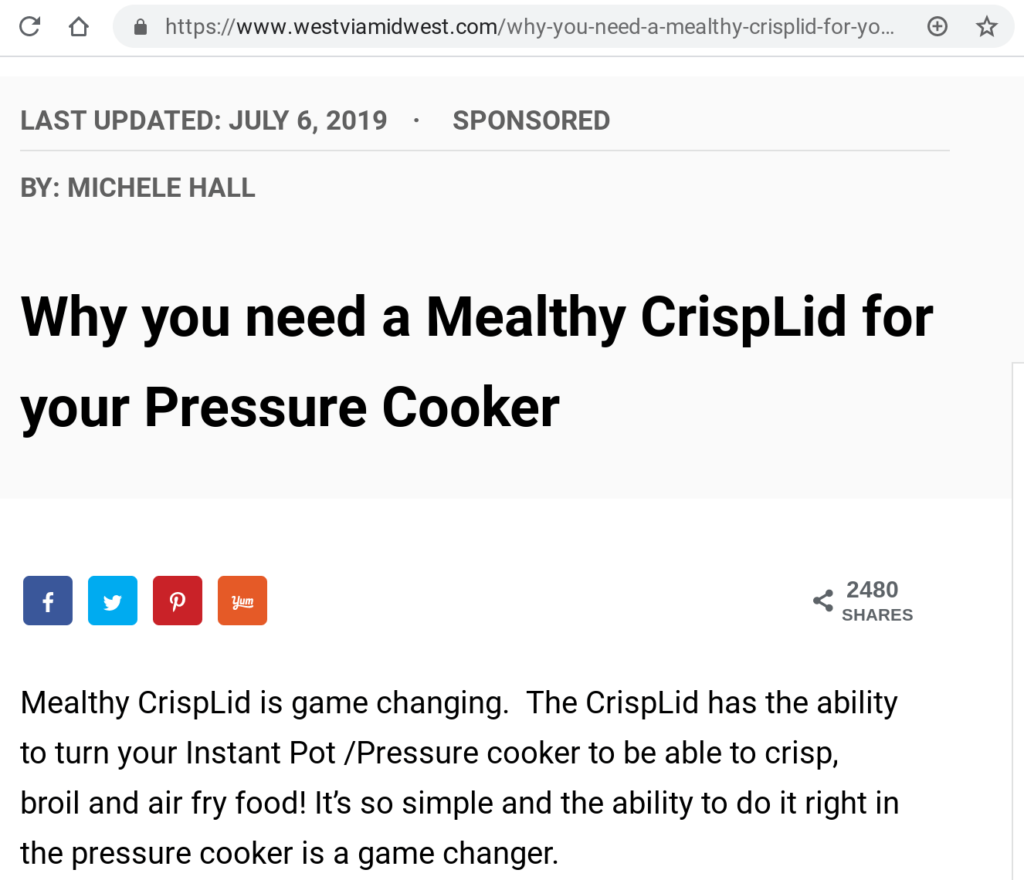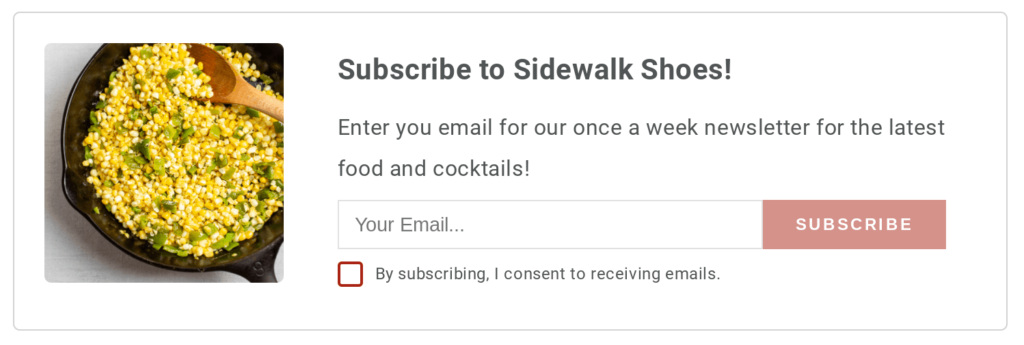How to make money as a food blogger? Asks almost every food blogger at some point in their blogging journey. After all, so many have translated their passion into reliable side and full-time incomes and even six-figure annual revenues in rare successes.
Just Google “food blog income reports,” and you’ll see how so many food blogs are profitable small businesses in their own right.
Clearly, there is money to be made in the food/recipe niche.
But making money from a food blog — especially when you only started it to pursue your passion or as a hobby — takes planning, work, and patience.
If you, too, are looking for ways to monetize your food blog, let’s fast-track your journey by going over the most guaranteed-to-work techniques. But before we see those, let’s see how food blogging for business differs from blogging for fun.
Pursuing food blogging as a hobby vs. running a food blog for money
Before you jump on the “how to start a food blog and make money” bandwagon, understand the pros and cons of being a professional or semi-pro food blogger.
The pros:
- It’s fulfilling. You get to earn doing what you love — creating and sharing recipes.
- You can start now. If you can create original recipes or jazz up the traditional ones, you’re good to go pro; you don’t need tons of experience.
- You have many monetization opportunities. So you can test and discover what works for you.
- Sky’s the limit. Who knows where a successful food blog can land you: on a TV show, make you into a culinary entrepreneur, and whatnot!
The cons:
- It takes a lot of work. There are no shortcuts. It’s hard work to commit to posting fresh recipes consistently.
- It’s not for everyone. You need an entrepreneurial mindset to succeed. You also need to be good at building relationships — with your readers, brand partners, and sponsors.
- It’s a long and winding road to success. You have to try things, and you won’t get everything right the first time.
How to make money as a food blogger? The groundwork
Some food bloggers are more intentional about their passion. Instead of thinking about how to make money from an existing blog, they think more in terms of how to start a food blog and make money from it. This makes a big difference as they focus on monetization right from the start.
But no matter when you start thinking about making money, as a food blogger it’s crucial to first work on these fundamentals.
Set up a budget: While you can start a food blog with a free platform like WordPress, web hosting still costs some monthly fees. Also, because WordPress doesn’t come with a default recipe post type, you need to create one. A free plugin like WP Recipe Maker can help with this. But as you grow, you might want to upgrade to a pro version. Plus, you need to buy ingredients and equipment to cook and post at least two new recipes a week. Add all such costs and create a budget for your food blog.
Build a revenue strategy: Pick from the food blog monetization methods that we’re sharing below and create a diversified revenue strategy with multiple income streams for your blog. Also, set reasonable monthly, quarterly, and annual targets.
Commit to the work: Monetizing a food blog requires you to post quality content consistently. So you need original recipes with great pictures and instructions. You also need to optimize your food blog for search engines (SEO). Plus, you have to engage your readers so you can build a community. You need to establish your presence on social media platforms like Pinterest (a popular hangout for foodies) as well. A YouTube channel helps, too.
With this primer on how to start a food blog and make money from it, we’re ready to see the actual monetization methods.
Monetizing a food blog with ads
How to make money as a food blogger? Ask this question to food bloggers who are already making good money with their blogs, and they’ll tell you: ads are one of the best ways to monetize a food blog.
Depending on how comfortable you are with posting ads on your blog, these can be
1) banner ads that display in your food blog’s header or sidebar or anywhere within your pages or posts
2) interstitials (or ads that display while a page is loading)
3) video ads if you post recipe videos.
Most food bloggers show a bunch of ads on their homepage:
You have three options to monetize your food blog with ads:
- Ad networks: Ad networks (like Google AdSense) connect publishers like you to their wide network of advertisers. They work as an intermediary and automatically place ads in your ad slots across your food blog and do a monthly payout for the ad impressions earned or clicks.
- Ad solutions: Ad solutions like Mediavine and Ezoic also help you place ads on your food blog. Unlike Google AdSense that almost any publisher/content creator can apply for, these ad solutions have qualifying criteria — for instance, it’s 50,000 page views/month for Mediavine. Also, some of these programs come with an exclusivity clause. So if you use Mediavine, you can’t use Google AdSense. Contracts can last a few months.
- Direct placements: You can also choose to sell ad space directly to advertisers. Here, you reach out to the brands you’d like to advertise on your food blog. Think of it as selling a sidebar banner ad to a brand of your choice for a monthly fee. This option gives you complete control over which brand will be able to show ads on your blog. If you sell ads directly, set up accurate performance measurement systems.
When you search about how to make money as a food blogger with ads, you’ll come across the “50,000+” figure — if you hit this number of page views a month, you could be looking at some good ad revenue.
Making money with affiliate marketing
Successful food bloggers will share that a significant part of their blog income comes from affiliate marketing. This might be the first lesson to learn if you want to start a food blog and make money.
As a food blogger, you can sign up for various affiliate programs like those from your favorite food, cookware, or kitchenware brands and promote their products on your food blog.
You can plug in quick recommendations inside your step-by-step recipe development tutorials for all the things you’re using to make it, from ingredients to equipment.
You can also post detailed long-form reviews of the items you want to promote. In this sense, affiliate marketing is more like editorial marketing. You offer valuable content, and in exchange, get a commission for each qualified sale. Here’s an example of a review post from a successful food blog:
You can also join programs like Amazon Affiliates, Rakuten, Target, and ShareASale, among others. If you join these affiliate networks, you can promote any product selling via them.
With WP Recipe Maker, you get a headstart with affiliate marketing on your food blog as our plugin lets you add affiliate links directly to your recipes’ ingredient and equipment sections. Each time a reader clicks through your links and ends up buying, you get a commission.
This recipe powered by WP Recipe Maker uses affiliate links in both the ingredients and equipment sections:
Readers trust your opinion, so naturally, you only want to promote products you actually believe in.
Earning revenue with sponsored content
One easy way to go about this is by selling sponsored content.
Here, you simply reach out to brands you use and recommend and ask them if they want to be featured on your blog. For example, in return for a 1500-word editorial story on their product, you get a certain fixed fee. This is usually a one-time payment. But you can also join their affiliate program if your contract allows and secure recurring commissions each time your story leads to referral sales.
Brand sponsorships also offer other exclusive perks.
Here’s an example of a sponsored story from a food blog. Notice the “SPONSORED” tag at the top:
Likewise, you can also charge brands for giving them shoutouts on your social media profiles.
If you don’t feel comfortable reaching out to brands yourself, join influencer programs that match content creators like you with relevant brands and facilitate the process of selling sponsored content. They usually charge a fee for each collaboration they secure for you. This is one of the most straightforward ways to start a food blog and make money.
Make sure to put a good contract in place that holds details of your collaboration with your partner brands and/or agency — fine print and all.
Bringing in income from brand ambassador programs
How to make money as a food blogger? Another great way for food bloggers to monetize their blogs is by signing up for brand ambassador programs.
Brands run ambassador programs to reward their most influential users who have good reach. If you join the ambassador program of a brand, you’re almost like their “spokesperson,” and you’re expected to cover the brand often on your food blog. If you sign up for a cookware brand’s program, for instance, you might want to place their banners dominantly on your blog, write stories covering their new launches, post reviews, and so on.
Check out this brand ambassador program’s details to get an idea of how these programs work:
Note that ambassador programs are more binding, and you can’t typically talk about competing brands. The nature of this monetization tactic perhaps makes it less popular than options like affiliate marketing for how to start a food blog and make money.
Monetizing your food blog’s email list
One of the most effective tips to make money as a food blogger is monetizing your email list. Here, you can:
- Add a banner in your emails to your subscribers and charge a flat fee to the brand.
- Include a recommendation for the brand or an exclusive feature section and link to the brand’s website.
- Add your affiliate links directly in your emails, enabling subscribers to buy with a click. (Not all affiliate programs allow using affiliate links in emails; please check terms before trying this.)
In general, too, you can lead your email subscribers back to your food blog and boost ad impressions and affiliate sales with emails.
To make money with this option, you need a healthy email list. So focus on building your list early on. Use good opt-in offers for the same:
Even more ways to make money with a food blog
Most people geared towards starting a food blog and making money online, stick to only posting recipes and using ads, sponsored content, and affiliate marketing for monetization.
But there are many more ways for you to make money as a food blogger. For instance, you can use your food blog to sell:
- Coaching services
- Cooking classes
- Workshops
- Cookalongs
- Recipe books
- Custom products/merchandise like printable meal planners
- Memberships
You can also use your food blog to generate leads and launch services like private catering, ghostwriting, and more. When you think about how to start a food blog and make money from it, these ideas might not occur to you. And that’s because most of these are geared towards experienced food bloggers.
Wrapping it up…
So, what’s the ultimate answer to the question “how to make money as a food blogger”? The key lies in generating volumes of quality traffic to your site.
The more relevant traffic you have, the more ad impressions you get. The more readers you have, the more affiliate sales you can drive. The same goes for sponsored content. You can charge higher fees for sponsored content if you have a bigger reach.
Getting to the point where you get good traffic, though, takes time and lots of quality content (recipes!).
So be patient.
Also, another part of the “how to start a food blog and make money” mix is compliance. Laws need you to be upfront with your readers about how you monetize your food blog. If it’s a sponsored recipe, state it. If it’s an affiliate link, note so. And so on.
Most importantly: While you should study the journey of the most successful food blogs and their income reports, stay grounded. Every food blog has its unique growth pace and trajectory. So keep enjoying the process of creating and posting recipes while keeping a tab on the monetary stuff, and you’ll eventually learn how to generate an income in your unique case.
Explore WP Recipe Maker, a WordPress recipe plugin that helps you post beautiful, SEO-friendly, and monetizable recipes to your food blog. It’s a must-have for food bloggers who are serious about making money from their blogs and want to reach more people with their recipes and build a loyal community.
If you decide the give affiliate marketing a try, make sure to check out our Easy Affiliate Links plugin as well. There’s a completely free version that works great for managing all the different affiliate links on your site. And there’s an integration with WP Recipe Maker to make monetizing your recipes as easy as possible!













Absolutely great post for the novice food blogger! Learned so much…thanks Brecht!!
Helpful and easy to understand. Thank you!